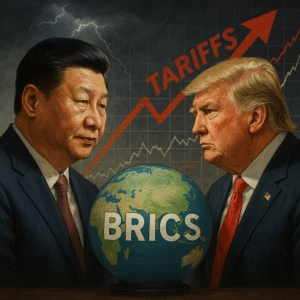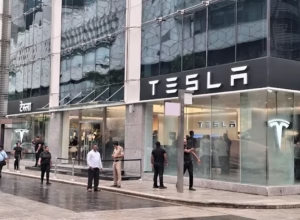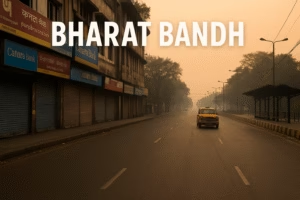
LA riots 2025
LA Riots 2025: The Protests That Shook Los Angeles and America

LA riots 2025 is a term that will now be etched into modern American history, joining the ranks of civil unrest events that have sparked nationwide debate over law enforcement, immigration policy, and federalism. What began as local protests against aggressive ICE operations rapidly escalated into a four-day wave of unrest that gripped Los Angeles, prompting a controversial federal military deployment and igniting political, legal, and cultural fallout that’s still unfolding.
What Triggered the LA Riots 2025?
The spark came on the morning of June 6, 2025, when Immigration and Customs Enforcement (ICE) launched a coordinated raid across greater Los Angeles. Targeting undocumented immigrants at commercial zones, warehouses, and family residences, the operation swept through neighborhoods like Boyle Heights, Echo Park, and the Fashion District. Witnesses described scenes of chaos—children separated from parents, buses loaded with detainees, and panicked calls for help flooding community hotlines.
The aggressive nature of the operation—particularly the inclusion of federal agents in plain clothes and reports of minimal judicial oversight,
triggered immediate public outcry. By evening, thousands had taken to the streets. Though many demonstrations remained peaceful, several turned confrontational. Social media lit up with videos showing LAPD officers in riot gear clashing with activists near the Metropolitan Detention Center, setting the stage for what would be called the LA riots 2025.
LA Riots 2025 Timeline: How Events Unfolded
- June 6: ICE raids spark protests. LAPD responds with crowd control measures. Dozens arrested. Multiple intersections in downtown Los Angeles shut down.
- June 7: Protests intensify. California Highway Patrol deployed to maintain order on major freeways. Sporadic violence reported in East LA and Koreatown. At least 15 injuries, including journalists.
- June 8: Fires erupt near city hall. Several autonomous vehicles, including Waymo and Tesla cars, are set ablaze. National Guard troops mobilize. Demonstrators and troops clash at Pershing Square.
- June 9: President Trump invokes Title 10, deploying 2,000 federal troops. Marines placed on standby. Governor Newsom denounces the action, vowing legal resistance. Social media platforms flag misleading videos from both sides.
Comparing the 1992 and 2025 LA Riots
Many have compared the LA riots 2025 to the infamous 1992 uprising sparked by the Rodney King verdict. While the 1992 events were rooted in police brutality and racial injustice, the 2025 riots center on immigration enforcement, civil liberties, and the role of federal authority in domestic unrest.
Both events share common threads: a disenfranchised population, flashpoint government actions, and a deep mistrust of law enforcement. However, 2025 is marked by the influence of technology—live-streamed raids, AI-powered crowd surveillance, and rapid misinformation. It’s a 21st-century crisis amplified by algorithms and hyper-partisan narratives.
Legal and Constitutional Challenges to Federal Action
The use of Title 10 to deploy troops without a governor’s request is rare—and contentious. California Governor Gavin Newsom has filed a federal lawsuit challenging the legality of President Trump’s order, citing violations of the 10th Amendment and the Posse Comitatus Act.
Legal scholars argue that unless federal property or direct threats to national security are involved, deploying troops without state coordination sets a dangerous precedent. The outcome of this lawsuit could redefine the federal-state relationship in future emergencies.
Voices from Protesters and Immigrant Communities
Among the protesters were activists, students, business owners, and immigrants. One undocumented father of two, interviewed by local media, said: “We came here for safety and jobs. Now, I live in fear every morning that we’ll be torn apart.”
Community groups such as CHIRLA and the Coalition for Humane Immigrant Rights called the raids “state-sponsored terror.” Volunteers staffed legal clinics and mobile response units to help families locate detained loved ones. Food banks reported record turnout during the unrest, especially in South Central and Pico-Union neighborhoods.
Impact on Businesses and Infrastructure
Downtown Los Angeles bore the brunt of property damage. Over 120 storefronts were vandalized, 23 vehicles torched, and several metro lines disrupted for 72 hours. The Los Angeles Chamber of Commerce estimates over $38 million in economic damage, surpassing the 2020 George Floyd protest losses.
Many small businesses—especially immigrant-owned shops—are now demanding state compensation. Insurance companies are still assessing claims, but early reports suggest coverage may not fully restore operations.
Role of Law Enforcement and Military
The LAPD’s early response was criticized as inconsistent. Initial crowd management was followed by aggressive tactics, prompting backlash from civil rights advocates. Once federal forces arrived, scenes of National Guard troops armed with rifles patrolling Wilshire Boulevard raised new questions: How much is too much force?
By June 10, over 550 arrests had been made. Videos emerged of officers using rubber bullets against unarmed protesters. At least three lawsuits are already underway against the LAPD and National Guard alleging excessive force, unlawful detention, and First Amendment violations.
Federal Messaging and Media Spin
The federal government justified its response by citing threats to federal buildings, including the ICE Field Office and a U.S. courthouse downtown. President Trump’s spokesperson described the deployment as “necessary to restore order and protect the rule of law.”
Meanwhile, progressive lawmakers called it authoritarian overreach. Senator Alexandria Ocasio-Cortez called the move “an attack on state sovereignty” and “a preview of martial law tactics.”
Social Media’s Role in the LA Riots 2025
Hashtags like #LARiots2025 and #NoMoreRaids trended globally. TikTok and Instagram were flooded with real-time footage—some showing peaceful chants, others showing clashes and property damage. Meta confirmed it removed over 500 misinformation posts within the first 48 hours, while X (formerly Twitter) faced criticism for amplifying false narratives.
Citizen journalism played a dual role: exposing abuses and fueling polarization. Many local livestreams were flagged or taken down due to violent content, raising renewed questions about digital censorship vs safety.
Reforms Proposed in the Aftermath
- ICE Oversight Legislation: A bipartisan bill introduced to require court warrants for large-scale ICE raids in urban zones.
- California Sanctuary Law Expansion: New amendments proposed to further limit cooperation between local law enforcement and federal immigration agents.
- Use of Force Transparency Act: Demands full disclosure of National Guard deployment logs, bodycam footage, and crowd dispersal protocols.
- Community Resilience Grants: Proposed funding for immigrant advocacy groups, trauma counseling, and riot recovery programs.
Focus Keyword in History: What “LA Riots 2025” Signifies
Today, a search for LA riots 2025 yields hundreds of thousands of results—op-eds, videos, court records, and academic essays. This moment is already part of the historical narrative. What matters now is what reforms follow and how the nation reconciles law enforcement with constitutional liberties and humane immigration practices.
Conclusion
The LA riots 2025 were not just a series of chaotic nights—they were a mirror held up to America’s deepest tensions. Immigration, federal power, civil rights, digital speech, and economic inequality all collided in Los Angeles. As lawsuits move forward and investigations unfold, the city must heal—but healing requires action, accountability, and honest dialogue.
History will judge how leaders responded, how systems evolved, and whether the public stood firm for liberty and justice—or let fear dictate policy. The next chapter isn’t written yet. But it starts with remembering what happened, why it happened, and ensuring it doesn’t happen again.
To explore your legal rights in protests and understand Title 10’s implications, visit the ACLU’s official protest rights page.
For the latest news, check out this story!
About The Author
Discover more from Trendy India News
Subscribe to get the latest posts sent to your email.





